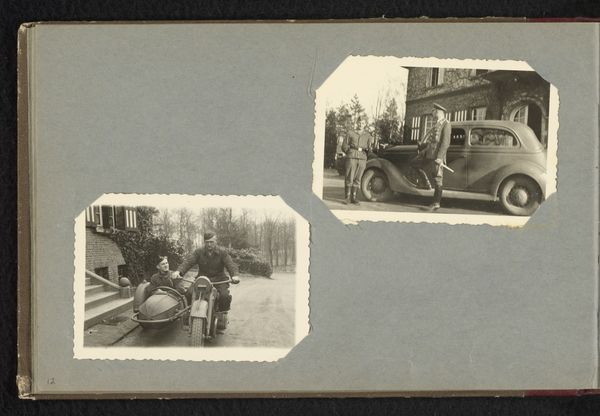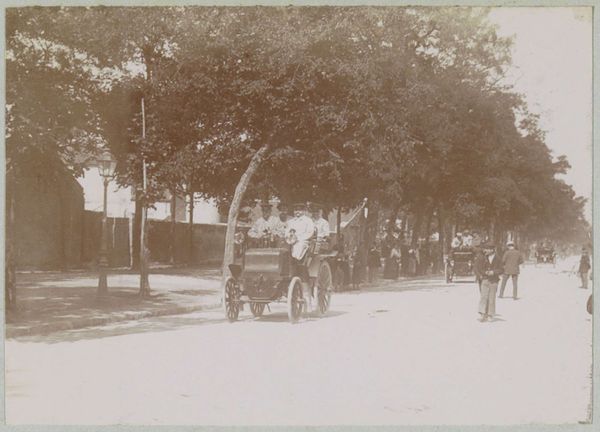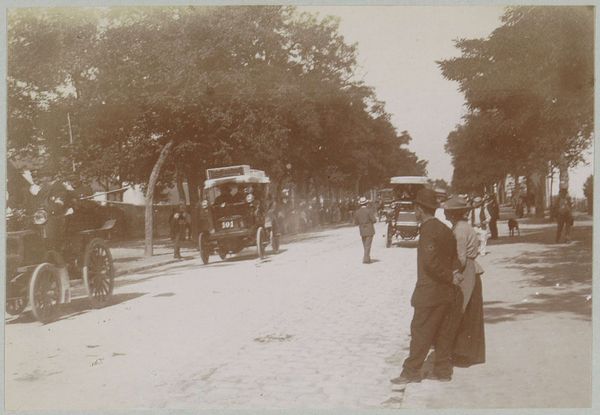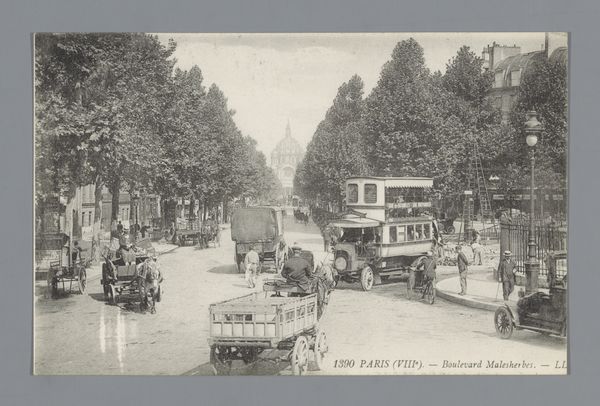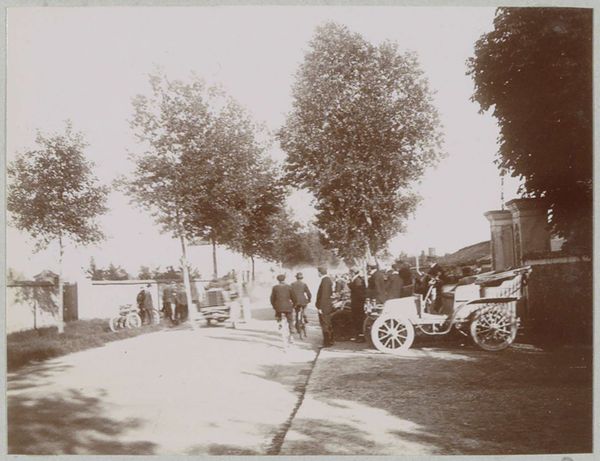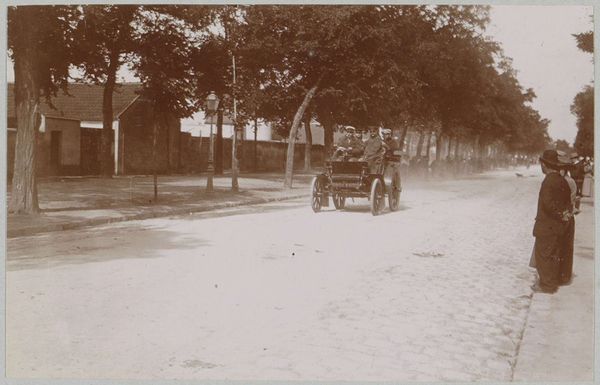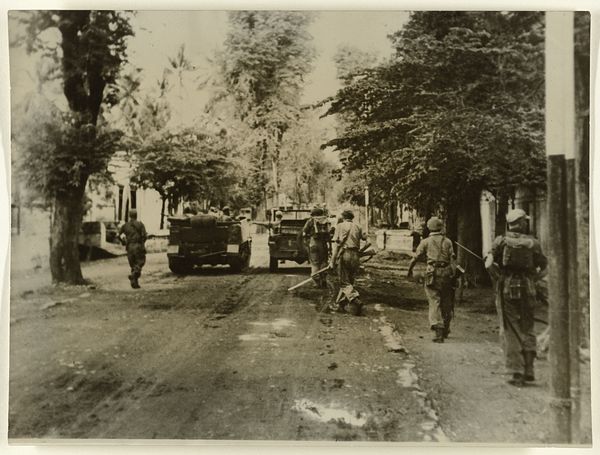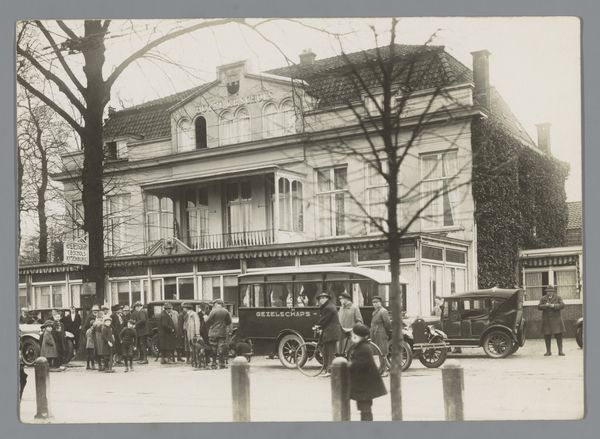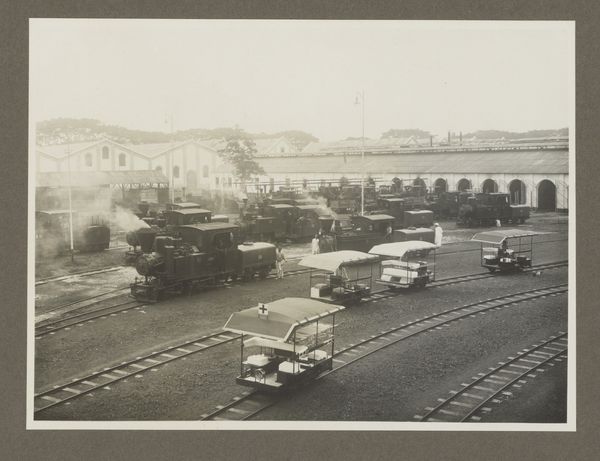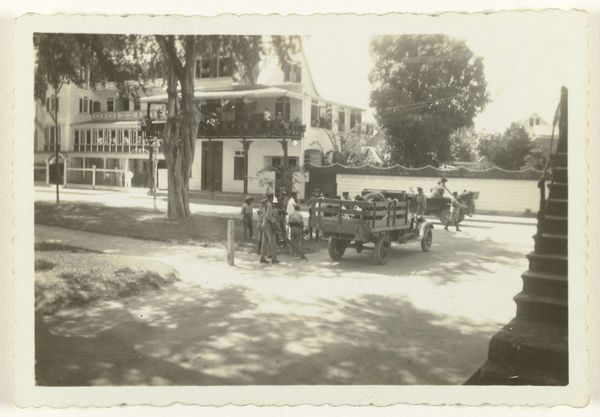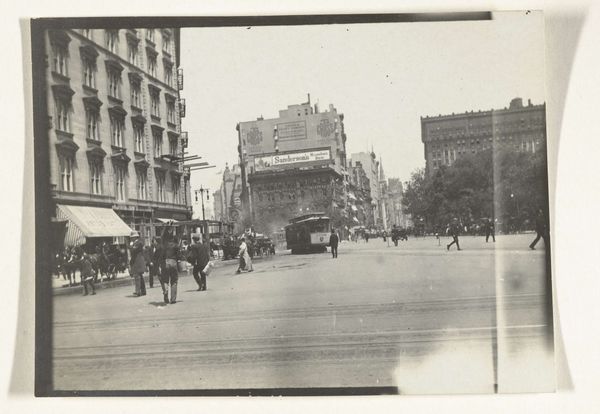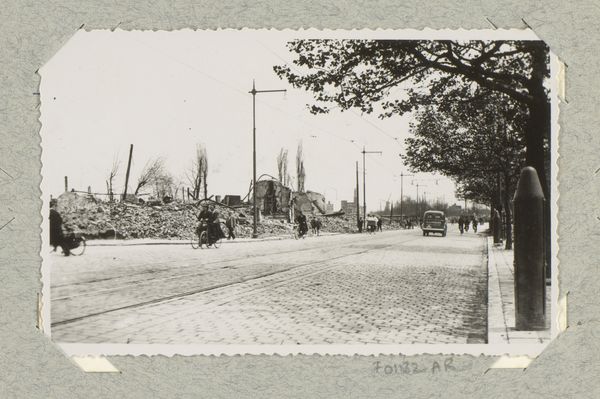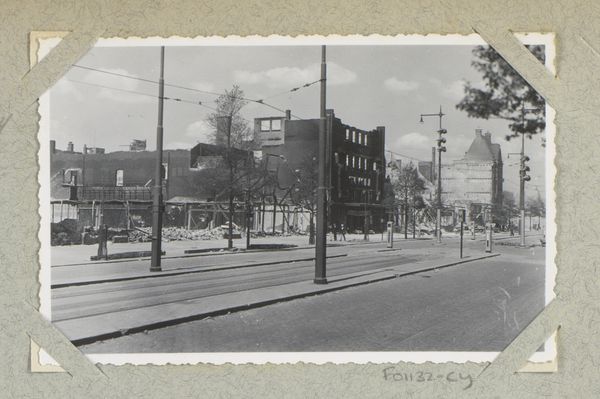
photography, gelatin-silver-print
#
war
#
archive photography
#
photography
#
gelatin-silver-print
#
cityscape
#
realism
Dimensions: height 6.5 cm, width 7.5 cm
Copyright: Rijks Museum: Open Domain
Curator: Before us we have an unsettling gelatin silver print simply titled, “German Tank and Ambulance,” created by an anonymous artist sometime between 1940 and 1945, now held in the Rijksmuseum collection. Editor: Stark. The composition feels unbalanced, weighted heavily on the right by that imposing tank. Even in grayscale, there’s a palpable sense of dread permeating the image. Curator: Absolutely. Let's consider the image’s materiality as a gelatin silver print. This medium allows for incredible detail, freezing a moment in time with stark realism. We can almost feel the weight of the tank tracks on the pavement. And let’s think about the historical context. During the Second World War, the means of production of images themselves became part of the war effort; the materials required were tightly controlled, and their distribution carefully managed for the war propaganda machine. Editor: The sharp contrast throws the geometric forms of the tank into high relief. It’s brutalist elegance meets wartime necessity. The texture created by the gradation of the print is very important here to the visual composition of the scene. Note how the tank mirrors and clashes with the architecture and trees around it. Curator: Exactly. And, by using local resources for materials in both military equipment and the photographic print itself, we see how the machinery of war intersects with everyday production during conflict. The city backdrop itself has become an active stage in the global event that is war. Even though we do not know for sure the location captured in this gelatin-silver print, we see a transformation of a cityscape through imposed martiality, permanently archived by this war photography. Editor: I am drawn to how the neutrality suggested by the presence of the ambulance clashes sharply with the implied aggression of the tank beside it, creating tension. The composition itself poses uncomfortable visual and historical questions for any viewer who attempts to reconcile these two incongruous symbols. The eye jumps restlessly between them. Curator: Indeed, it asks questions of complicity. Thinking about it that way really transforms one's relationship to this powerful artifact. Editor: Absolutely. The very formal organization of shapes reveals larger truths about conflict.
Comments
No comments
Be the first to comment and join the conversation on the ultimate creative platform.
